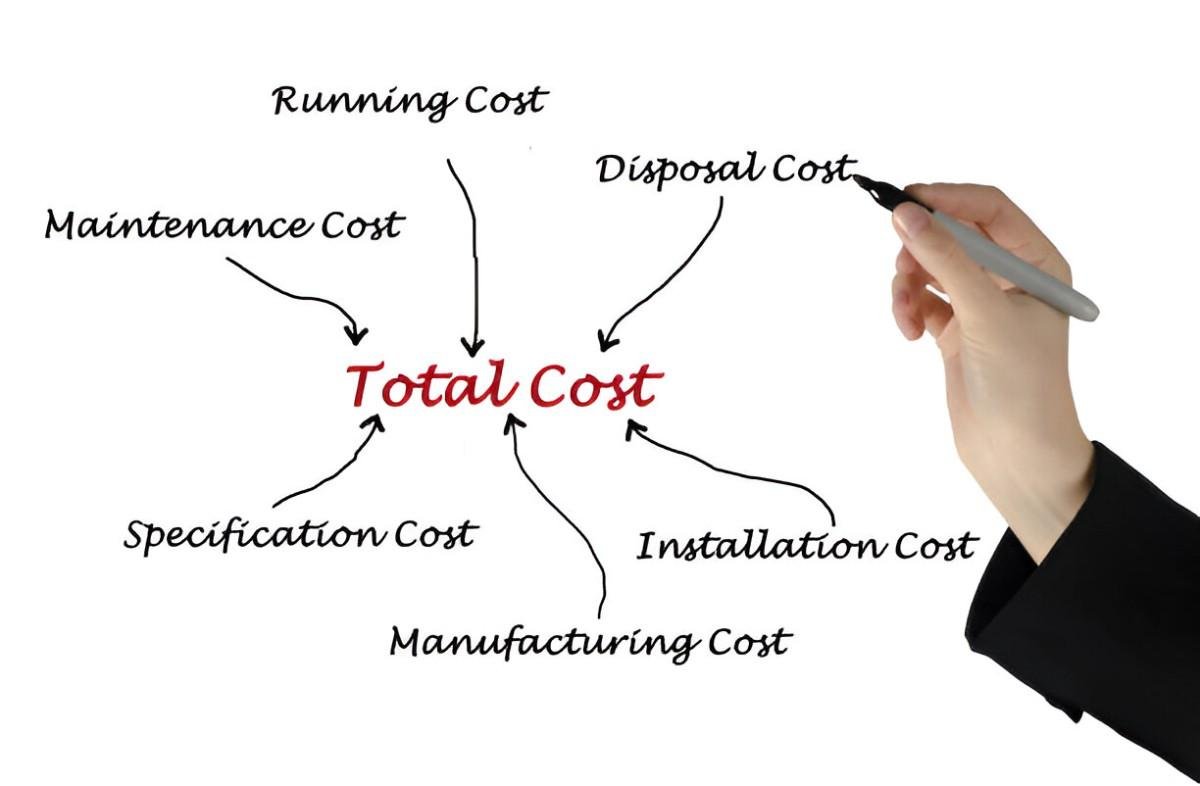When I first started learning about cost accounting, I found myself overwhelmed by the jargon and complexity of the methods used to calculate costs. One method that stood out, both for its importance and its initial confusion, was total-absorption costing. Over time, I realized that understanding this method is not just about memorizing formulas but about grasping its purpose, mechanics, and implications for decision-making. In this guide, I’ll break down total-absorption costing in plain English, using examples, tables, and mathematical expressions to make it accessible for beginners.
Table of Contents
What Is Total-Absorption Costing?
Total-absorption costing, also known as full costing, is a method of accounting that assigns all manufacturing costs—both variable and fixed—to the cost of a product. This means that every unit produced absorbs a portion of the fixed overhead costs, in addition to the direct materials, direct labor, and variable overhead costs.
The goal of total-absorption costing is to provide a comprehensive view of the total cost of producing a product. This is particularly useful for external financial reporting, as it aligns with Generally Accepted Accounting Principles (GAAP) in the United States.
Why Does Total-Absorption Costing Matter?
In my experience, total-absorption costing matters because it reflects the true cost of production. By including fixed overhead costs, it ensures that all expenses are accounted for in the product’s cost. This is crucial for pricing decisions, profitability analysis, and inventory valuation.
For example, if I were running a manufacturing business, I’d need to know the full cost of producing each unit to set a price that covers all expenses and generates a profit. Without total-absorption costing, I might underestimate my costs and set prices too low, leading to losses.
The Components of Total-Absorption Costing
To understand total-absorption costing, I need to break it down into its core components. These include:
- Direct Materials: The raw materials that go directly into the production of a product.
- Direct Labor: The wages paid to workers who are directly involved in the production process.
- Variable Overhead: Costs that vary with the level of production, such as utilities and supplies.
- Fixed Overhead: Costs that remain constant regardless of production levels, such as rent, depreciation, and salaries of supervisors.
The formula for total-absorption costing can be expressed as:
\text{Total Cost per Unit} = \text{Direct Materials} + \text{Direct Labor} + \text{Variable Overhead} + \text{Fixed Overhead}Let’s look at an example to make this clearer.
Example: Calculating Total Cost per Unit
Suppose I run a small factory that produces wooden chairs. Here are the costs associated with producing one chair:
- Direct Materials: $20
- Direct Labor: $15
- Variable Overhead: $5
- Fixed Overhead: $10
Using the formula above, the total cost per unit would be:
\text{Total Cost per Unit} = 20 + 15 + 5 + 10 = 50So, each chair costs $50 to produce under total-absorption costing.
Fixed Overhead Allocation: The Key Challenge
One of the trickiest aspects of total-absorption costing is allocating fixed overhead costs to individual units. Since fixed costs don’t change with production levels, they must be spread across all units produced.
The formula for allocating fixed overhead is:
\text{Fixed Overhead per Unit} = \frac{\text{Total Fixed Overhead}}{\text{Number of Units Produced}}Let’s revisit the chair example. Suppose the total fixed overhead for the month is $10,000, and I produce 1,000 chairs. The fixed overhead per unit would be:
\text{Fixed Overhead per Unit} = \frac{10,000}{1,000} = 10This $10 is then added to the cost of each chair.
What Happens When Production Levels Change?
Here’s where things get interesting. If production levels change, the fixed overhead per unit also changes. For instance, if I produce 2,000 chairs instead of 1,000, the fixed overhead per unit drops to $5:
\text{Fixed Overhead per Unit} = \frac{10,000}{2,000} = 5This means that the total cost per unit decreases as production increases, which can have significant implications for pricing and profitability.
Comparing Total-Absorption Costing with Variable Costing
To fully appreciate total-absorption costing, I need to compare it with variable costing, another popular method. The key difference lies in how fixed overhead costs are treated.
- Total-Absorption Costing: Includes fixed overhead in the product cost.
- Variable Costing: Excludes fixed overhead from the product cost, treating it as a period cost instead.
Let’s use the chair example to illustrate this difference.
Example: Total-Absorption Costing vs. Variable Costing
Assume the following costs for producing 1,000 chairs:
- Direct Materials: $20,000
- Direct Labor: $15,000
- Variable Overhead: $5,000
- Fixed Overhead: $10,000
Under total-absorption costing, the total cost per unit is $50, as calculated earlier.
Under variable costing, the total cost per unit excludes fixed overhead:
\text{Total Cost per Unit (Variable Costing)} = 20 + 15 + 5 = 40This $10 difference per unit can lead to different financial outcomes, especially when it comes to inventory valuation and profit reporting.
The Impact on Financial Statements
Total-absorption costing has a direct impact on the financial statements, particularly the income statement and balance sheet.
Income Statement
Under total-absorption costing, fixed overhead is included in the cost of goods sold (COGS). This means that if not all units produced are sold, some fixed overhead costs remain in inventory, reducing the COGS and increasing net income.
In contrast, variable costing treats fixed overhead as a period cost, expensing it entirely in the period incurred. This can lead to lower net income when production exceeds sales.
Balance Sheet
Total-absorption costing results in higher inventory values on the balance sheet because fixed overhead is included in the cost of unsold units. This can make the company’s financial position appear stronger than it would under variable costing.
Advantages of Total-Absorption Costing
From my perspective, total-absorption costing offers several advantages:
- Compliance with GAAP: It’s required for external financial reporting in the U.S.
- Comprehensive Costing: It provides a complete picture of production costs.
- Inventory Valuation: It ensures that all costs are captured in inventory, which is important for financial statements.
Disadvantages of Total-Absorption Costing
However, total-absorption costing isn’t without its drawbacks:
- Complexity: Allocating fixed overhead can be complicated and time-consuming.
- Potential for Misleading Profits: Higher production levels can artificially inflate profits by spreading fixed costs over more units.
- Less Useful for Decision-Making: Since it includes fixed costs, it may not be as helpful for short-term pricing and production decisions.
Practical Applications of Total-Absorption Costing
To better understand how total-absorption costing works in practice, let’s look at a real-world scenario.
Scenario: A Manufacturing Company
Suppose I own a company that manufactures widgets. Here’s the cost data for the month:
- Direct Materials: $50,000
- Direct Labor: $30,000
- Variable Overhead: $20,000
- Fixed Overhead: $40,000
- Units Produced: 10,000
- Units Sold: 8,000
Using total-absorption costing, the total cost per unit is:
\text{Total Cost per Unit} = \frac{50,000 + 30,000 + 20,000 + 40,000}{10,000} = 14The cost of goods sold (COGS) is:
\text{COGS} = 8,000 \times 14 = 112,000The ending inventory is:
\text{Ending Inventory} = 2,000 \times 14 = 28,000Under variable costing, the total cost per unit would exclude fixed overhead:
\text{Total Cost per Unit (Variable Costing)} = \frac{50,000 + 30,000 + 20,000}{10,000} = 10The COGS would be:
\text{COGS} = 8,000 \times 10 = 80,000And the ending inventory would be:
\text{Ending Inventory} = 2,000 \times 10 = 20,000As you can see, total-absorption costing results in higher COGS and higher ending inventory values compared to variable costing.
Conclusion
Total-absorption costing is a fundamental concept in cost accounting that provides a comprehensive view of production costs. While it has its complexities and limitations, it’s essential for external financial reporting and offers valuable insights into the true cost of production.





